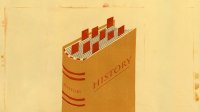Setting Up PBL for National History Day
Middle and high school teachers can boost engagement in social studies with project-based learning units for National History Day.
Your content has been saved!
Go to My Saved Content.During the coming school year, as many as half a million students in grades six through 12 will take on the role of historian to investigate the theme of Turning Points in History. Some will advance through local, regional, and state competitions to the final round of the annual international event National History Day (NHD), when their scholarly writing, documentary films, and other creative products will be judged by professional historians and content experts.
Despite the name, NHD is much more than a day. It involves an extended project that challenges students to be curious, think critically, and communicate effectively.
Terry Kaldhusdal, an award-winning sixth-grade teacher at Kettle Moraine Middle School in Dousman, Wisconsin, has had students investigate everything from the fight to fund public libraries to the legacy of Hammurabi’s Code to the use of postcards to communicate the terror of lynching. “My students have taught me about historical topics, events, and characters I knew nothing about,” he says.
“It’s about the process, about learning research skills through project-based learning,” says Theresa Cantwell, social studies teacher at Jericho Middle School in New York. Every seventh- and eighth-grade student in her school is required to do a project each fall, but entering the competition is optional.
Matt Elms got started with National History Day early in his teaching career in Washington state when he was looking for a way to motivate his middle school students. “They needed a challenge—something to give them a reason to invest in academics and learning.” Now an international educator, Elms has developed a popular National History Day program at Singapore American School and coordinates NHD International, open to students around the world.
Addressing Standards
Although teachers and students can participate in the program individually, many schools adopt NHD across departments or grade levels, connecting the annual theme to their content area.
When English teacher Kibbie Jensen was teaching middle school in Dripping Springs, Texas, she used NHD to address key learning goals. “Can students develop a research question? Find reliable sources? Analyze and write nonfiction texts?” Language arts standards “are all things you need to do to produce a piece of historical research,” she says.
Now teaching at Dripping Springs High School, Jensen expects her students to build on what they learned from their middle school NHD experience. “They already know what primary and secondary sources are. They know how to do a bibliography. I don’t have to spend a lot of time reteaching. We can go deeper into developing their argument,” she says.
At Singapore American School, eighth-grade students have the option of taking a National History Day class instead of a more traditional social studies course. They learn about U.S. history and government, but content is taught through document analysis and essay writing rather than lectures and tests. They also become skilled researchers, often conducting interviews to gather their own sources.
Elms recalls a team who wanted to research the poaching of rhinoceroses for their horns—a topic far outside his own knowledge base. “They found experts on the ground to interview [virtually] in Africa and also consulted with our science teacher.” When students make their own connections across content areas, he adds, “that’s gold.”
Former students of Kettle Moraine Middle School’s Kaldhusdal tell him that NHD “is the most rigorous work they do until they get to college. It’s the closest students get to thinking like historians.”
Scaffolding Learning
Students choose not only which topic to investigate but also which product to create to demonstrate their understanding. They also decide whether to work as a team or individually. The degree of student choice means teachers have to be comfortable managing many moving parts.
Along with using the extensive teaching resources provided by NHD, teachers who are veterans of the program develop their own strategies for success.
At Jericho Middle School, teachers have created a digital NHD notebook with links to resources. Theresa Cantwell scaffolds students’ research by prompting them to consider what she calls “The Equation”: “What’s the long before? What’s the right before? What’s the heart of it? What’s the immediate impact? What’s the long-term impact? What’s the student’s point of view?”
Choosing a topic can be challenging for students who aren’t used to open-ended projects. Dripping Springs High School’s Jensen suggests having a list of starter ideas ready if students feel stuck. She plans multiple checkpoints to make sure that students are making progress and getting feedback. She keeps parents in the loop, too.
Singapore American School’s Elms has invested in his own professional development to become a better teacher of writing. Although the contest focus is history, “it’s hard-core academic writing,” he says, regardless of the final product. Successful projects “are not about glitz and glamour,” he adds. “It’s about coming up with a new argument and defending it with evidence.”
Enduring lessons
Learning how to think critically may be the most enduring lesson of NHD, especially at a time of abundant conspiracy theories and unfiltered information. Kaldhusdal challenges Kettle Moraine Middle School students to question the reliability of sources by asking, “What do I know? How do I know it? Why does it matter?” These are essential questions “for citizens in a democracy,” he adds.
As students move through rounds of competition, they improve their arguments with feedback from judges and other audience members.
Kibbie Jensen learned the value of feedback and revision firsthand when she competed in NHD as a student, earning a memorable trip to the finals. “I also remember the amount of work it took and how much I revised and reworked.” She shares those insights with today’s students as they create their own interpretations of history.
